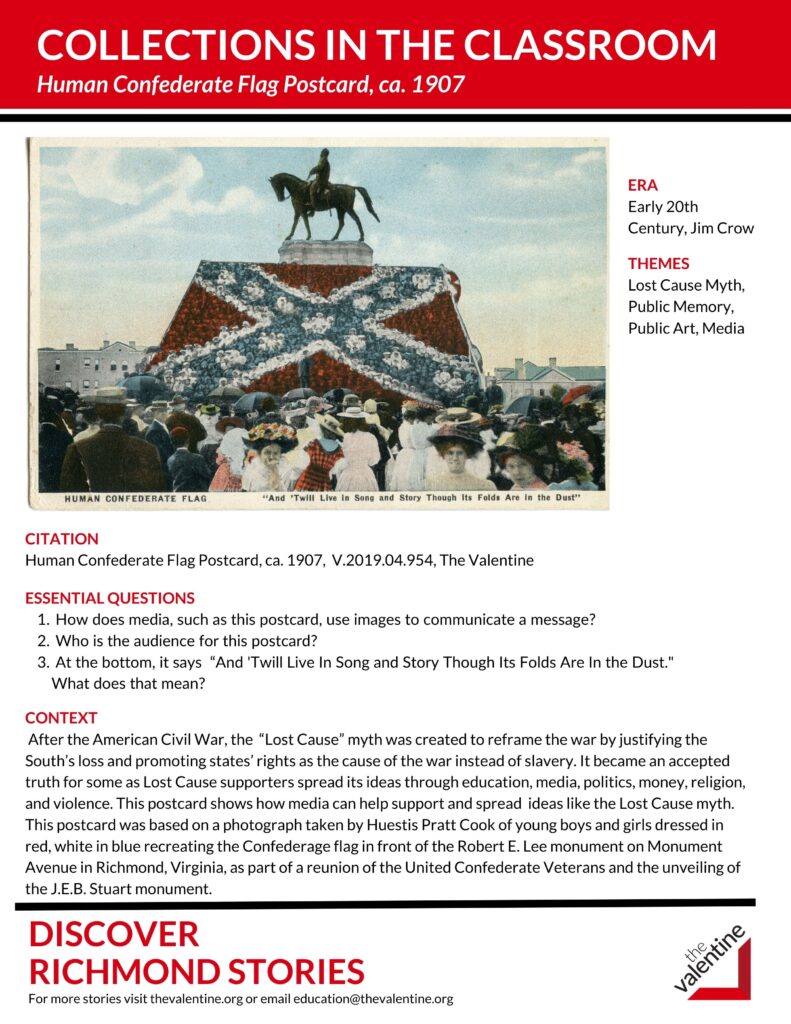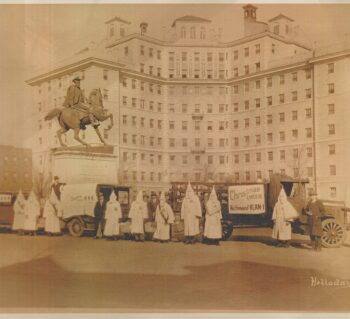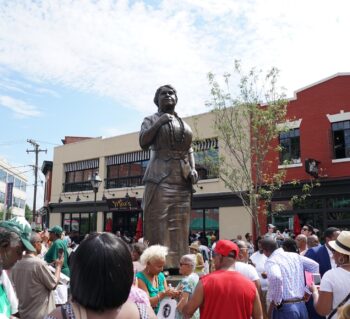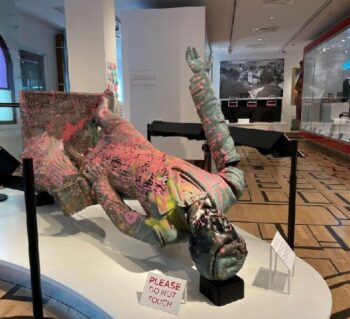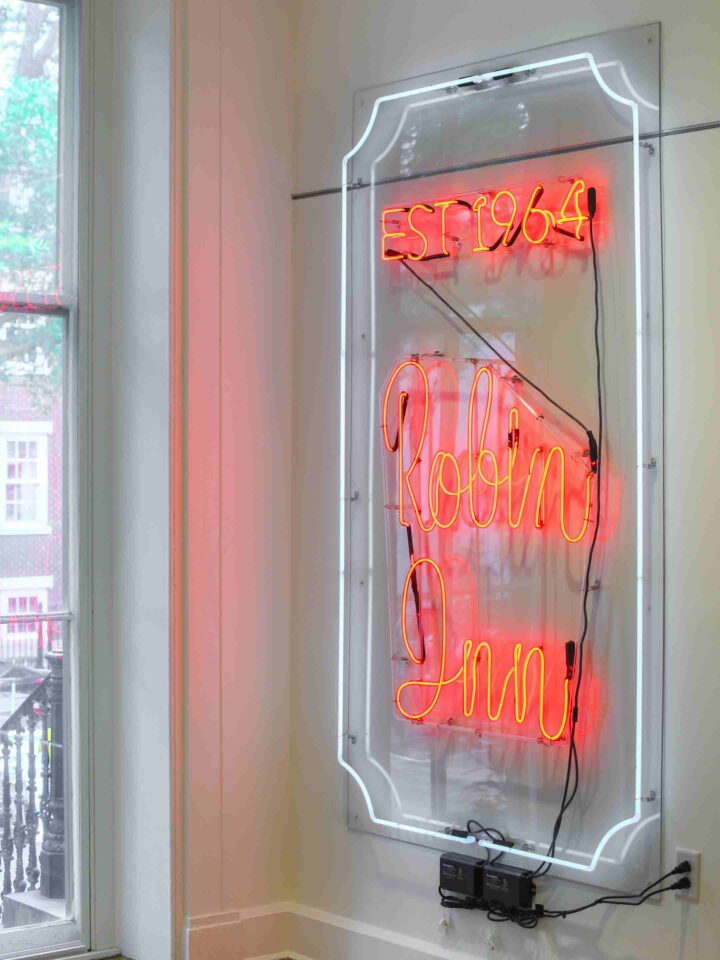
Human Confederate Flag Postcard, ca. 1907
Collections in the Classroom
Grade Level
High, Middle
Time Period
1900-1950: Early 20th Century
Theme
Jim Crow, The Lost Cause Myth
Resource Type
Primary Source
Download Collections in the Classroom: Human Confederate Flag Postcard (pdf)
ESSENTIAL QUESTIONS
- How does media, such as this postcard, use images to communicate a message?
- Who is the audience for this postcard?
- At the bottom, it says “And ‘Twill Live In Song and Story Though Its Folds Are In the Dust.” What does that mean?
CONTEXT
After the American Civil War, the “Lost Cause” myth was created to reframe the war by justifying the South’s loss and promoting states’ rights as the cause of the war instead of slavery. It became an accepted truth for some as Lost Cause supporters spread its ideas through education, media, politics, money, religion, and violence. This postcard shows how media can help support and spread ideas like the Lost Cause myth. This postcard was based on a photograph taken by Huestis Pratt Cook of young boys and girls dressed in red, white and blue recreating the Confederage flag in front of the Robert E. Lee monument on Monument Avenue in Richmond, Virginia, as part of a reunion of the United Confederate Veterans and the unveiling of the J.E.B. Stuart monument.
